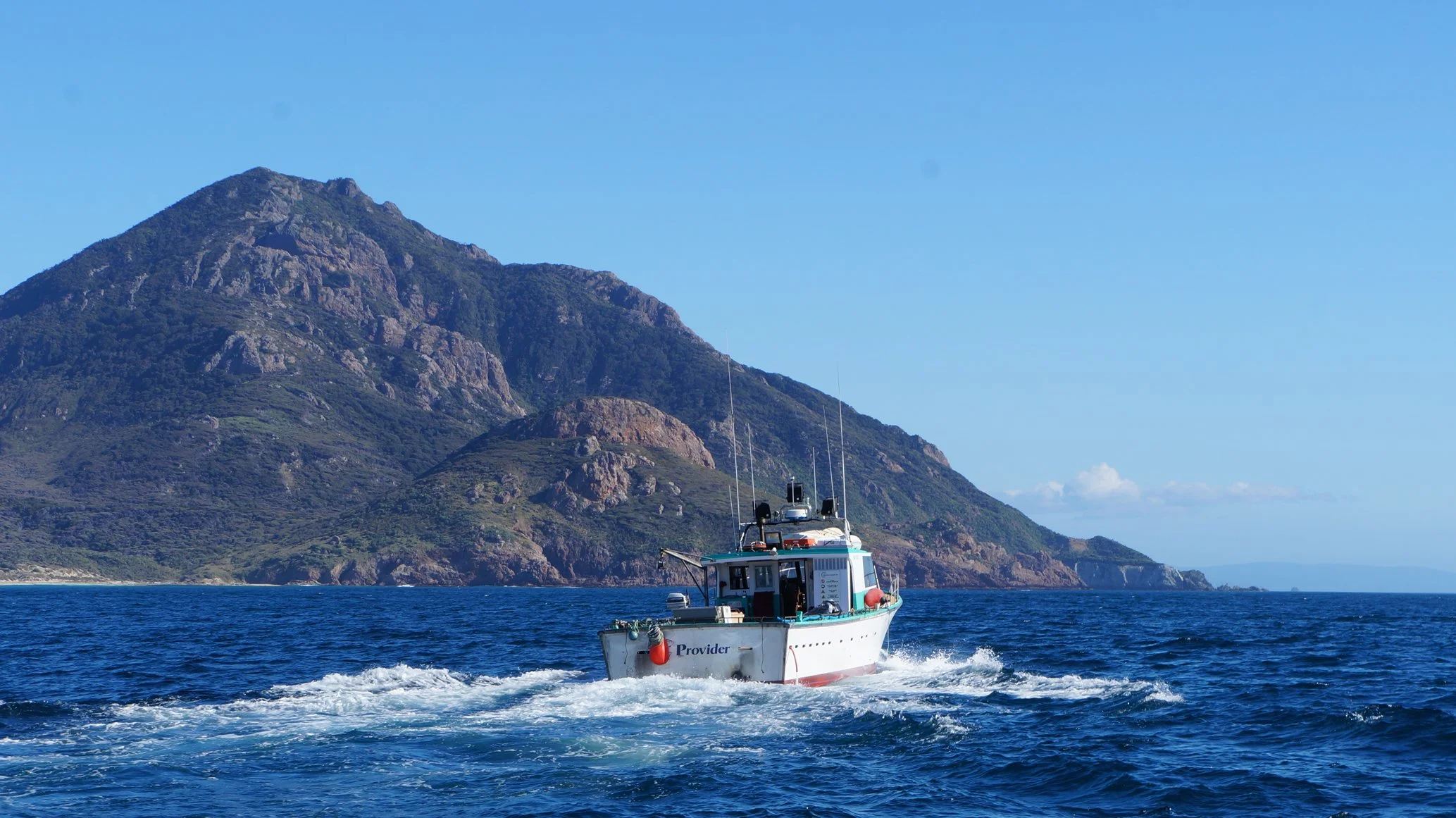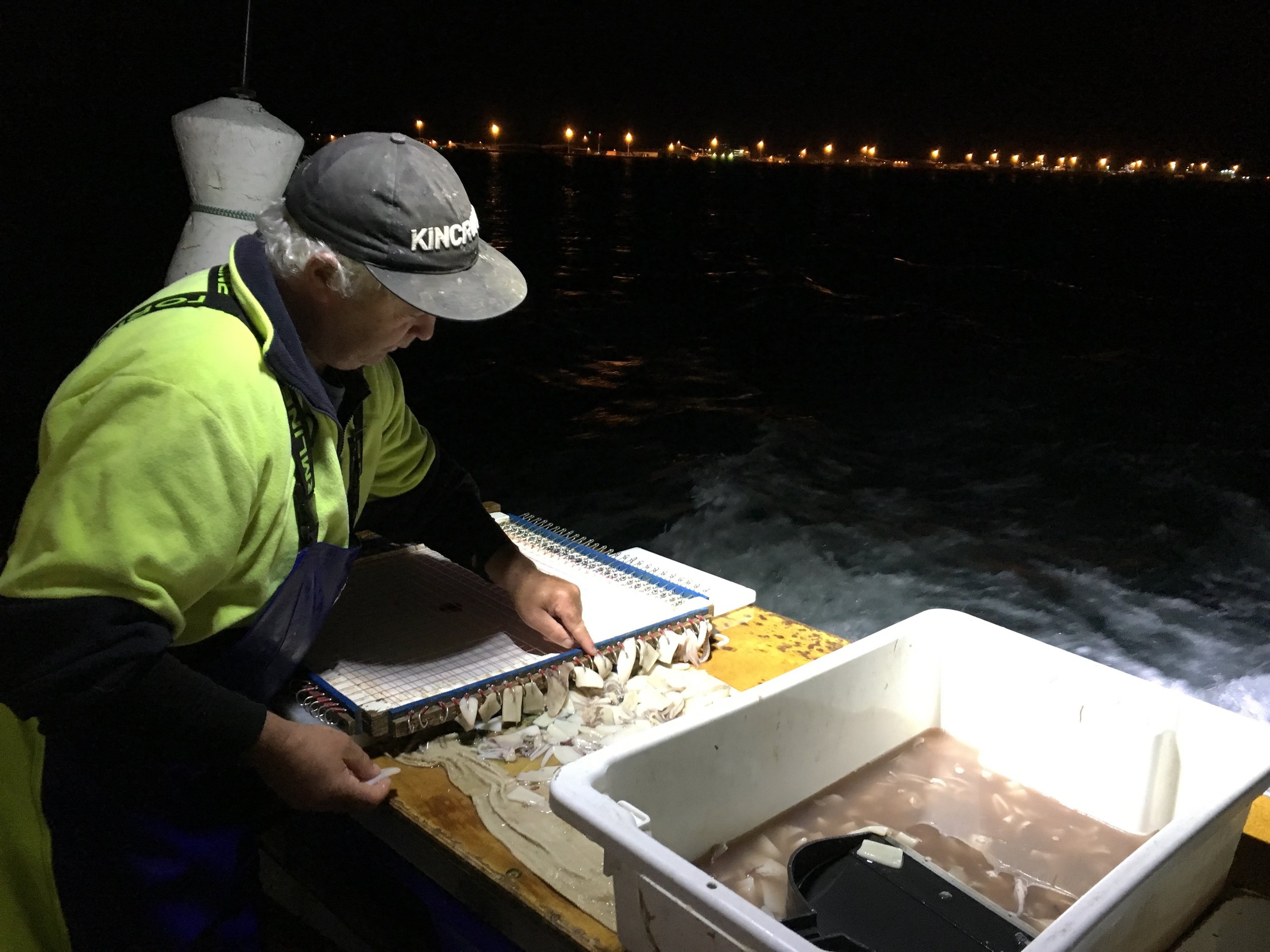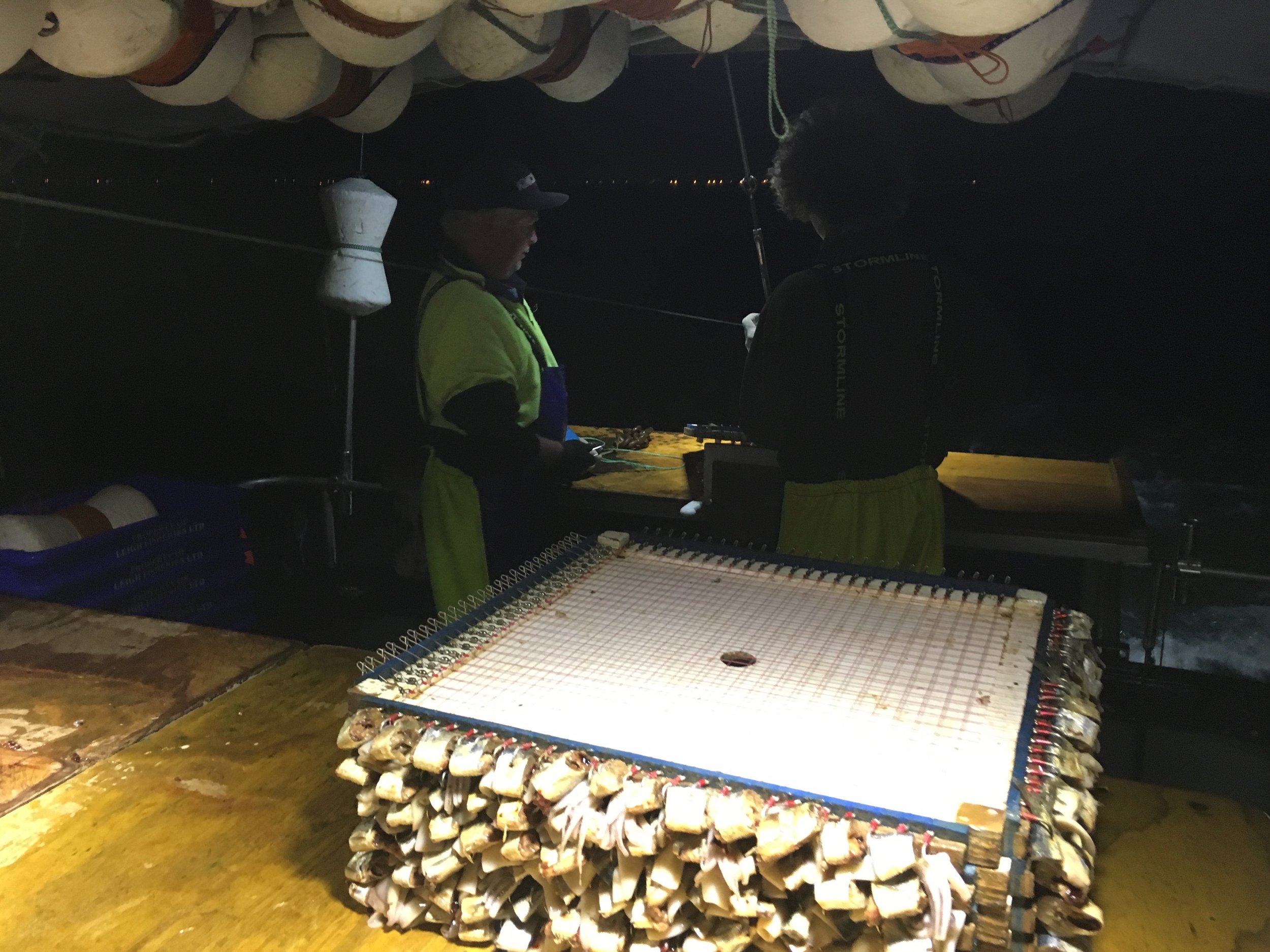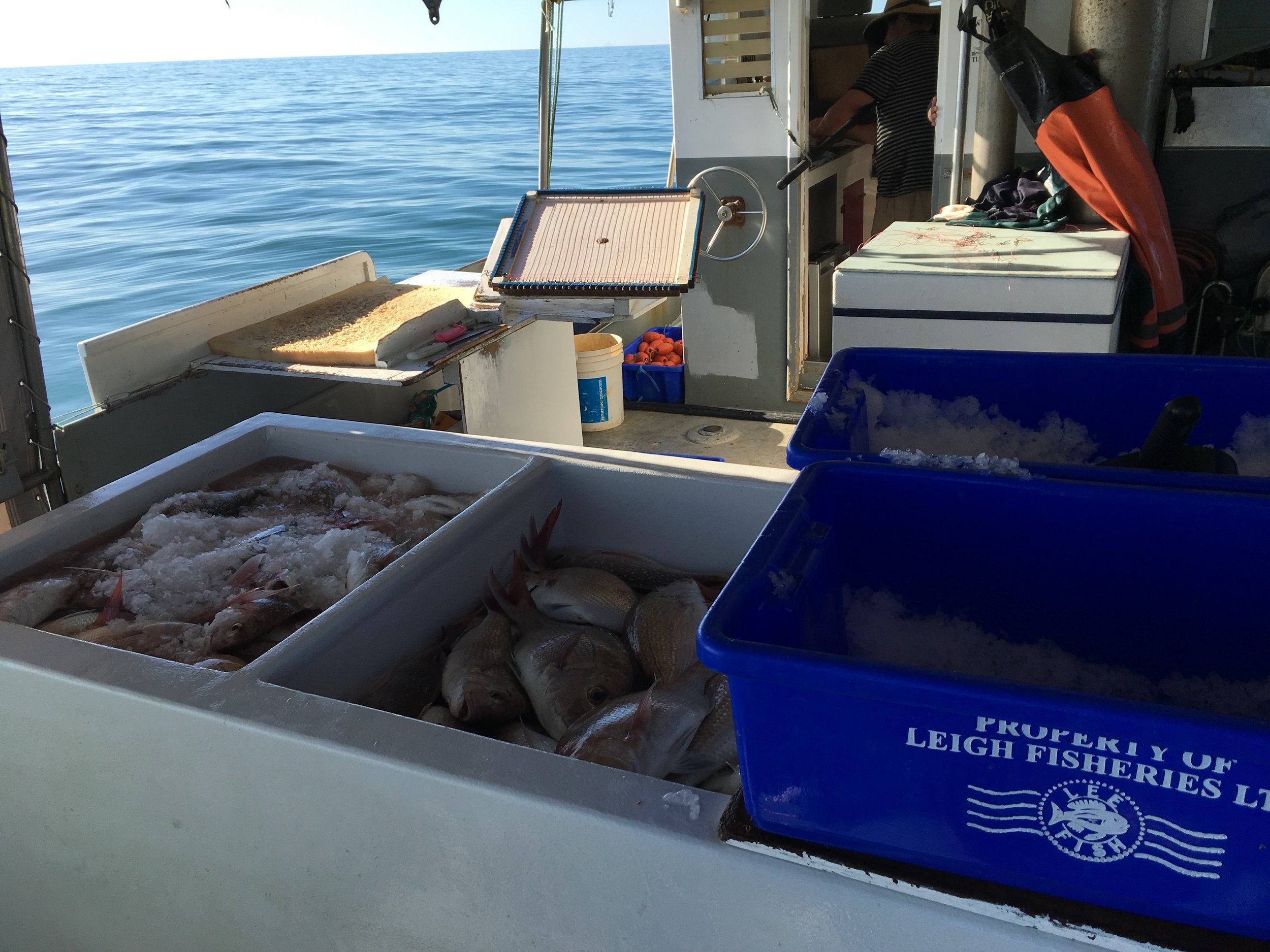Exploring Sustainable Fishing Methods
When it comes to harvesting seafood, there's a myriad of methods employed by fishermen around the world. Each technique comes with its own set of benefits and challenges, and at 46 South, we're committed to purchasing seafood that’s only been sourced with sustainable fishing methods to ensure the highest quality seafood and prioritize the health and sustainability of our oceans. Let's take a closer look at some of the fishing methods we employ and the species they target.
Long Line Fishing
Species targeted: Red Bream, Gurnard, Tarakihi, Trevally, Groper (wreckfish), Snapper, Kingfish, Ling (kingclip), Alfonsino, John Dory
Long line fishing is a method commonly used by vessels off the east coast of New Zealand’s North Island. This technique involves setting baited hooks on a long line, with distraction devices and weights used to mitigate the risk of accidental seabird capture. Once the fish are brought aboard, they're immediately processed using the 'Iki Jime' method – a technique that involves spiking the fish's brain to ensure humane and high-quality handling. To learn more about the 'Iki Jime' method and why it's a point of difference for us, read The Art of Ike Jime: Enhancing Fish Freshness, Quality, and Ethical Fishing Practices.
Trawling
Species targeted: Sole, Monkfish, Brill, Turbot, Ling, Gurnard, Tarakihi
When managed properly within a quota system like New Zealand's, trawling can be an effective way to harvest seafood, especially when weather conditions are favorable. Our trawling vessels use small, light nets towed along the seafloor for a short duration, typically 2 hours. The nets have diagonal mesh to allow smaller fish to escape, ensuring sustainable harvesting practices. Once aboard, the catch is cleaned and harvested before being stored in totes with ice, preserving its freshness.
Traps
Species targeted: Blue Cod, Ling
Traps are another sustainable fishing method we employ, particularly for species like Blue Cod and Ling. These steel cages with wire mesh are set on the seafloor and left for a short duration, usually 1-2 hours. The wire mesh allows smaller fish to escape, reducing bycatch and ensuring the sustainability of the fishery. Once lifted, the traps are emptied, re-baited, and reset, with the catch immediately processed and stored in totes with ice.
We're dedicated to sourcing from companies that employ fishing methods that yield the highest quality seafood and prioritize the long-term health of our oceans. By choosing sustainable fishing practices, we're ensuring that future generations can continue to enjoy the bounties of the sea for years to come.








